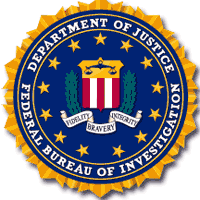History of the FBI

Below you'll find the highlights of the history of the Federal Bureau of Investigation (FBI).
Before 1908 the US department of justice had no organized institution or group of investigators to gather intelligence. The DOJ hired secret service agents and private investigators. However, congress began to complain of this approach of having a secret service department in every bureau. On July 26, 1908 Attorney General Charles Joseph Bonaparte created the Bureau of Investigation (BOI) during the presidency of Theodore Roosevelt. It was renamed as the federal Bureau of Investigation (FBI) in 1935.
In the early days very few crimes came under the jurisdiction of the bureau and the agency was mainly involved with crimes like antitrust, land fraud, bankruptcy, and peonage etc. The Mann act of 1910 was the first major expansion in the jurisdiction of the Bureau. In 1917 America entered the First World War and the Bureau of Investigation acquired the responsibility of espionage, Selective Service, and Sabotage Acts. It also assisted the Department of Labor by investigating enemy aliens in the country. The National Motor Vehicle Theft Act of 1919 gave the bureau more jurisdictions over criminals who crossed state lines to evade justice. After the war ended the agency returned to its prewar functions.
The Bureau managed to apprehend an army of Mexican revolutionaries in California in the 20s. The Bureau of investigation played an important role in apprehending prominent gangsters like Kate Barker, "Baby Face" Nelson, and George Kelly in the 30s. The FBI also played a vital role in reducing the influence of Ku Klux Klan by using the Mann act to capture Louisiana's philandering KKK "Imperial Kleagle".
From the 1940s to the 1970s the FBI conducted several investigations of espionage cases against the United States. After the entry of America in the Second World War, FBI offices were placed on 24-hour schedules. The FBI arrested previously identified aliens who threatened the US security and handed them to relevant authorities. In theses troublesome times the FBI increased its personal strength by taking in National Academy graduates who were given abbreviated training courses. By the end of 1943 the number of FBI employees increased from a little over 7000 to over 13000 personnel.
In 1940 Roosevelt created Special Intelligence Service (SIS). It was composed of a contingent of FBI agents. A very large number of Germans and Japanese lived in South America that provided cover for the Axis communication facilities. The SIS was charged with the job of keeping tabs on all Axis activities. The SIS was also charged with the responsibility to liquidate the axis and propaganda and intelligence networks. The SIS destabilized axis support to such an extent that by 1944, south America was largely out of axis influence.
After the war, one of the main concerns of the FBI was the spread of communist agents in the country. The FBI's authority to do background investigations on government employees also expanded in the postwar years. In 1945 the FBI raided Amerasia magazines offices and discovered State Department documents of classified nature.
After the Atomic Energy Act passed in 1946, FBI started to conduct background check on government employees with access to critical data on American atomic energy program. The purpose of this was to determine their loyalty and weather they had any ties to the communist party. Different agencies that wanted to check their employees for disloyalty asked the FBI for investigation only, while making the final judgment themselves. The FBIs resources were stuck at war levels up till 1950.
The numbers of FBI agents were increased to 6200 and the bureau got more money as a consequence of the Korean War. The FBI was instrumental in diminishing communist Party influence in the USA. The FBIs jurisdiction continued to grow through its assistance to state and local law enforcement agencies. In 1950 it started the 10 most wanted fugitives list that increased the capability of the FBI to capture criminals.
The 60s and 70s were troubling times in the country which was characterized by idealism and also by increased urban crime. The romance with violence produced about 300 bombings by the leftist anti war groups. No specific guidelines for covering national security investigations had been developed for the bureau agents until 1976. Until that time, FBI dealt with the militant new left, in the same way as it had done against the communists and Ku Klux Klan in the previous decades.
The FBI also carried out a controversial surveillance program in this time called Cointelpro. The purpose of this program was to keep tabs on dissident organizations in the USA. These included both, the militant and the non violent movements. This program was dismantled by Hoover on April 28, 1971.
To counteract illegal drugs in America in the 80s, the FBI was given concurrent jurisdiction with the Drug Enforcement Administration (DEA) over narcotics violations. Hundreds of important figures in the drugs trade were arrested as a result. The most famous case of this time was the pizza connection case which included a Sicilian mafia boss.
Since June 2002 the FBIs top priority has become counterterrorism followed by counterintelligence. On October 26, 2001 the PATRIOT act was passed and signed by President George W. Bush. It granted new provisions against the threat of terrorism. This act increased FBIs powers, especially in wiretapping and monitoring of emails. The more controversial of these provisions is the sneak and peak rule by which FBI can search a house while the residents are away and not inform them about it for weeks afterwards. The FBI can also look into library records of people it suspects of illegal activity.
FBI currently employs over 12,000 Special Agents and 17,000 professional support Staff.
Go from FBI history to Secret Services
Go to Top Spy Secrets Homepage











New! Comments
Savvy spies can comment here... Just leave me a comment in the box below.